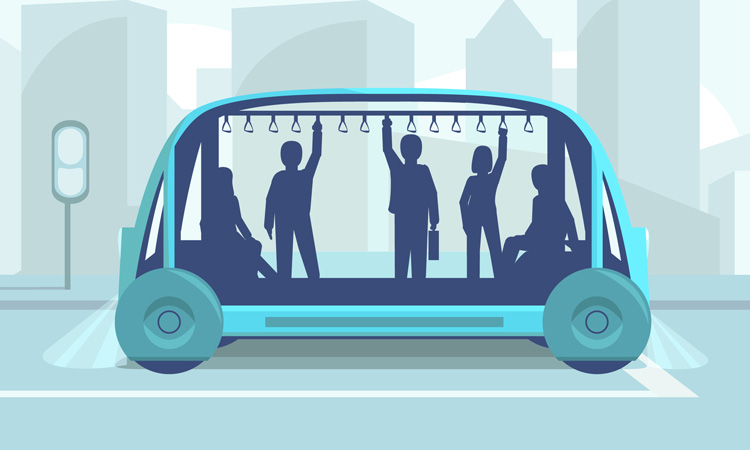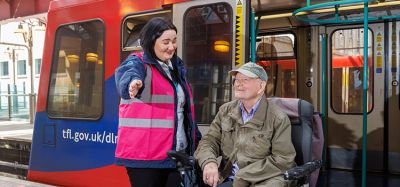New guidance reveals path to “pandemic-proof” self-driving vehicles
- Like
- Digg
- Del
- Tumblr
- VKontakte
- Buffer
- Love This
- Odnoklassniki
- Meneame
- Blogger
- Amazon
- Yahoo Mail
- Gmail
- AOL
- Newsvine
- HackerNews
- Evernote
- MySpace
- Mail.ru
- Viadeo
- Line
- Comments
- Yummly
- SMS
- Viber
- Telegram
- Subscribe
- Skype
- Facebook Messenger
- Kakao
- LiveJournal
- Yammer
- Edgar
- Fintel
- Mix
- Instapaper
- Copy Link
Posted: 27 August 2020 | Sam Mehmet (Intelligent Transport)
With this new guidance, Zenzic and Aurrigo hope to lay the foundations for the development of an industry-wide set of official design guidelines to cater for the needs of vulnerable users in the creation of shared use self-driving vehicles.


Zenzic, the organisation dedicated to accelerating the self-driving revolution in the UK, in partnership with self-driving company Aurrigo, has revealed new design guidance for the development of “pandemic-resistant” self-driving vehicle interiors.
As outlined in the UK Connected and Automated Mobility Roadmap to 2030, the designs of accessible connected and automated vehicles (CAVs) need to be finalised by 2024 to ensure the UK is able to benefit from widespread self-driving vehicles and connected and automated mobility (CAM) services by 2030.
“To deliver accessible transport for all, services and vehicles will have to cater for the needs of vulnerable users. Managing airborne virus transmission, crucial to maintaining public health, must continue to be a key consideration in the design and manufacture of shared-use self-driving vehicles,” Zenzic wrote in a statement.
The proposed guidance includes the following:
- Developing vehicles with social distancing in mind – interiors should be large enough to incorporate a minimum distance of 1.5m between pairs of seats
- Plexiglass safety screens should be installed where it is safe to do so, to reduce the transmission of air between different zones of the vehicle
- Hand-sanitiser dispensers to be installed near vehicle doors for passengers to disinfect their hands before entering and while exiting the vehicle. Sanitiser levels to be regularly monitored
- Enough seating for 10 passengers, ensuring enough capacity to make shared vehicle use worthwhile from a traffic and air quality perspective, whilst keeping transmission rates low
- Contactless payment and automatic door-opening to reduce the number of contact points during each customer’s journey
- HVAC systems should be fitted with mechanisms to filter the air and remove viruses and other pathogens from recirculated airflow, i.e. HEPA filters or UV surface treatment
- Vehicles should be able to facilitate airborne means of cleansing, i.e. using ozone to sanitise shared space while the vehicle is empty
- All aspects of reducing airborne pathogen transmission need to be designed around existing safety and accessibility factors.
Zenzic has invited the CAV industry to collaborate and work together to develop the guidance further and ensure future vehicles are designed to be pandemic-resistant. The guidance will be included in future updates to the UK Connected and Automated Mobility Roadmap to 2030.
Zenzic CEO, Daniel Ruiz, said: “As the COVID-19 pandemic has highlighted the risks vulnerable people face in public transport, decision-makers in the field of Connected and Automated Mobility (CAM) now have an opportunity to understand their needs and build solutions into the design of vehicles which are safer and services which are more inclusive. We must then ensure that services which use this technology are available to those living in isolation or in rural areas, avoiding and reducing regional transport poverty. In the future, it will be crucial that CAM is accessible to all, especially during uncertain times. While this new guidance is a necessary stepping stone, it must not stop here – industry players need to come together to formalise guidelines, with their insight being reflected in future versions of the UK Connected and Automated Mobility Roadmap to 2030”
Aurrigo Sales and Marketing Director, Miles Garner, added: “One of the key benefits of self-driving vehicles has always been that we are starting from a blank sheet of paper. From the outset we have worked with veterans and other vulnerable citizens to help us figure out their exact accessibility needs and ensured that our vehicles are tailored to them. We have designed our vehicles with a broad range of accessibility needs in mind, from wheelchair users to the visually impaired. But the COVID-19 pandemic has forced us, and the industry at large, to reconsider what we take into consideration during designing. It is clear that self-driving vehicles offer a safer way to keep people and goods moving in situations where person-to-person contact needs to be minimised. In effect, we have had to massively expand our idea of who is vulnerable in society, and design accordingly to make our vehicles ‘pandemic-proof’ for future scenarios like this.”
Daniel Ruiz, Zenzic CEO, will be speaking at Intelligent Transport’s online Transport Innovation Summit in September 2020. To find out more and to register to attend, click here.


Related modes
Autonomous vehicles
Related people
Daniel Ruiz, Miles Garner







